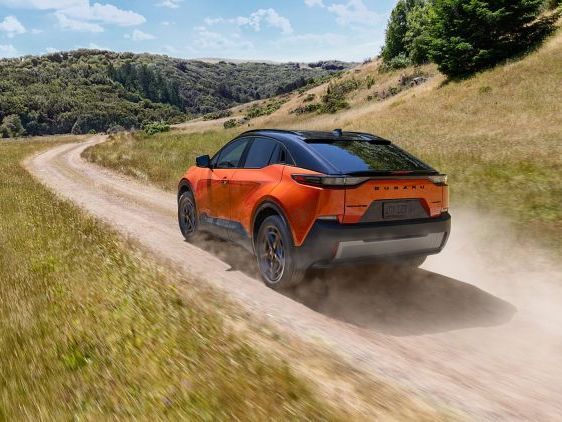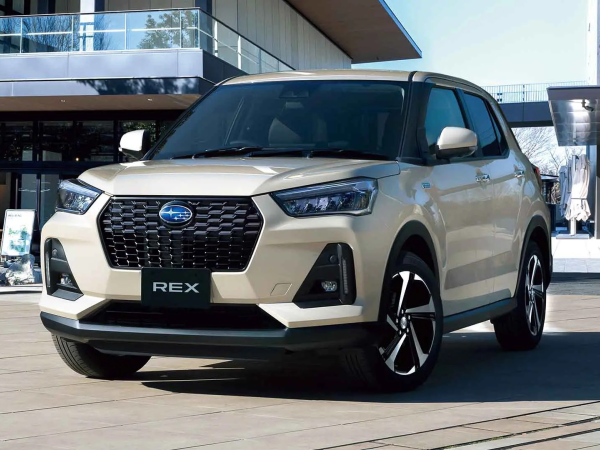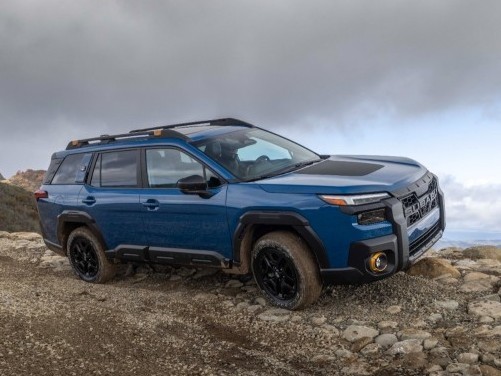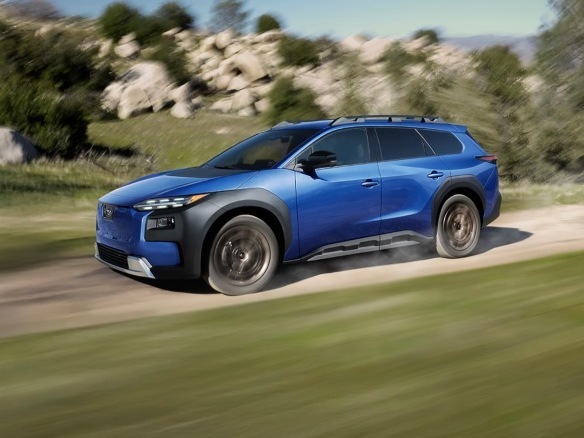Q
How does the 2017 Subaru BRZ perform in terms of handling?
The 2017 Subaru BRZ sets a benchmark in handling performance among rear - wheel - drive sports cars in its class. Its low center of gravity (just 475mm) and boxer engine layout significantly enhance cornering stability. Paired with the front MacPherson strut and rear double - wishbone suspension setup, it delivers pinpoint road feedback on Malaysia's twisty mountain roads around Genting Highlands, with steering that's extremely precise.
The standard Torsen limited - slip differential effectively controls the tendency to oversteer typical of RWD cars, enabling the BRZ to maintain stable and controllable driving dynamics even on wet suburban roads around Kuala Lumpur. Notably, it rolls on factory 215/45 R17 tires. While the width might seem conservative initially, it actually enhances steering agility—perfect for drivers who crave precise control.
Many Malaysian owners opt to upgrade the dampers and fit wider high - performance tires to further enhance its performance limits, but the stock setup already achieves an ideal balance between daily drivability and track - day fun. This tuning style prioritizes mechanical feedback, standing in refreshing contrast to modern sports cars loaded with excessive electronic aids, making it an absolute joy for Malaysian enthusiasts who live for that pure, unfiltered driving experience.
Special Disclaimer: This content is published by users and does not represent the views or position of PCauto.
Related Q&A
Q
Does the 2017 Subaru BRZ have a manual or automatic transmission?
The 2017 Subaru BRZ hits the Malaysian market with two transmission options to suit different driving styles: a 6-speed manual for those who crave that direct, hands-on control, and a 6-speed automatic that's more at home in stop-and-go city traffic or daily commutes. Under the hood, you've got a 2.0-liter flat-four engine pumping out 200 horsepower and 205 Nm of torque—smooth power delivery with sharp throttle response. Pair that with the rear-wheel-drive setup, and you're looking at a car that handles like a dream, perfect for drivers who live for the thrill of the road.
In Malaysia, the BRZ has built up a solid following among performance car enthusiasts, thanks to its unique driving dynamics and relatively accessible price tag. And let's not forget its modification potential—it's a favorite in the local tuning scene, with plenty of folks upgrading suspension, exhausts, and intakes to squeeze out even more fun. Whether you row your own gears with the manual or opt for the automatic, the 2017 BRZ delivers loads of driving enjoyment for Malaysian owners who want that sporty, engaging feel behind the wheel.
Q
What is the safety rating of the 2017 Subaru BRZ?
The 2017 Subaru BRZ scored well in several major safety evaluations. For instance, it earned the "Top Safety Pick" designation from the Insurance Institute for Highway Safety (IIHS), with strong performances in frontal crash, side crash, and roof strength tests. However, it only received an "Acceptable" rating for head restraint and seat safety.
For Malaysian buyers, while ASEAN NCAP hasn't specifically tested the 2017 BRZ, Subaru has always emphasized safety technology. The BRZ comes standard with essential safety features like multiple airbags, Vehicle Stability Control (VSC), and Anti-lock Braking System (ABS), which enhance everyday driving safety.
It's worth noting that as a rear-wheel-drive sports car, the BRZ's low center of gravity and precise handling can indirectly help reduce accident risks. That said, drivers still need to be mindful of a rear-drive car's dynamics on wet roads—moderating speed and steering inputs is key to staying safe.
If you're considering a used BRZ, it's advisable to check the service records and accident history to ensure all safety systems are functioning properly.
Q
Does the 2017 Subaru BRZ have a noise issue?
The 2017 Subaru BRZ doesn't typically have significant noise issues in everyday driving. But some owners might notice a bit more wind or road noise at highway speeds, that's not surprising considering its sporty setup and those slick frameless doors. They look awesome, sure, but they are not very effective in sound insulation. Still, overall, the noise levels are totally in line with expectations from a sports car in this class.
For Malaysian owners, the hot climate can make tires wear out a bit quicker. My tip? Keep an eye on your tire condition regularly and maybe replace them with a set that's better at reducing road noise – that'll have a significant impact. Also, don't neglect servicing those chassis bushings and suspension bits. The tropical rain and humidity around here can speed up rubber aging, and worn parts can start to produce abnormal noises before you know it.
If you do hear something weird, start by checking the exhaust system mounts or the driveshaft universal joints. Those can get a little loose after long - term use. And hey, remember that the BRZ's engine note is actually tuned – especially when you're revving it higher, you'll hear more intake noise in the cabin. That's deliberate, to make you feel more connected to the drive, not a mechanical problem.
If you're really after more peace and quiet, adding sound - deadening material in the trunk and wheel wells is a solid move. It's a pretty common modification here in Malaysia, and it's very effective.
Q
Is the 2017 Subaru BRZ reliable?
The 2017 Subaru BRZ holds up pretty well in terms of reliability. Under the hood, you've got that 2.0-liter flat-four FA20 engine – it delivers power smoothly with decent fuel economy, making it a solid fit for daily drives around Malaysia and the occasional mountain road blast. Thanks to that boxer engine's low center of gravity, the handling is sharp and engaging. A heads-up though: with these boxer engines, keeping an eye on the oil level becomes a bit more important as they rack up miles, just to avoid any potential lubrication hiccups down the line.
When it comes to the gearbox, both the 6-speed manual and 6-speed auto variants earn praise for their durability and crisp, smooth shifts. The chassis and suspension setup feel robust too, handling Malaysia's varied road conditions nicely. Now, since the BRZ sends power to the rear wheels, you'll want to be a touch more cautious when the roads are wet or slippery to prevent any unexpected slides.
Inside, the cabin materials prioritize functionality over flash, but the build quality is solid – you won't hear a lot of annoying rattles even after years of use. Maintenance costs land somewhere in the middle of the sports car spectrum, and sticking to regular servicing is a smart move to keep it running strong for the long haul. If you're after driving fun and don't mind a slightly firmer ride from the suspension, the 2017 BRZ is definitely one to consider.
Q
Is BRZ 2017 good for long drives?
The 2017 Subaru BRZ, as a rear-wheel-drive sports car, delivers a well-balanced performance for long drives in Malaysia. Its low center of gravity and boxer engine provide stable handling, making it a solid fit for smooth highways like the North-South Expressway. However, the firm suspension setup might take a toll on comfort when tackling some of Malaysia's older, rougher road surfaces. The 2.0L naturally aspirated engine offers linear power delivery, ideal for cruising, though its 6.9L/100km fuel consumption means you'll want to keep an eye on Malaysia's fluctuating petrol prices. The cabin, while cozy, can feel a bit tight for taller drivers on extended trips. A quick tip for our local climate: considering the factory cooling system upgrade kit is smart given Malaysia's heat. Also, with that rear-wheel-drive layout, extra caution is definitely advised during the rainy season. What's cool though is the BRZ's strong aftermarket support here – the local car community often shares suspension upgrade ideas specifically aimed at boosting long-distance comfort. If you're regularly hitting the roads for inter-state journeys, those proven setups are worth checking out to level up your drive.
Q
What is the fuel economy of the 2017 BRZ?
The 2017 Subaru BRZ delivers moderate fuel economy. Official figures put the manual transmission model at around 8.4 liters per 100 kilometers combined (that's roughly 12 km per liter), while the automatic is slightly better at approximately 7.8 liters per 100 km combined (about 13 km per liter). Of course, your actual mileage will vary depending on how you drive, the roads you're on, and how well you keep up with maintenance.
Under the hood, you've got a 2.0 - liter naturally aspirated flat - four engine. This car is not about achieving maximum fuel efficiency; it's all about the driving fun. So, those fuel numbers are pretty much in line with other performance - focused cars in its class.
For Malaysian buyers, the BRZ's fuel economy is generally acceptable for city commutes, but you'll want to be mindful of fuel costs during longer highway stints. Sticking to regular maintenance is a good idea to keep it running at its best and control fuel expenses.
If outright fuel efficiency is your top priority, you might want to look into a hybrid or turbocharged alternative. But the BRZ's highlight is its sharp handling and that sweet rear - wheel - drive thrill – it's well - suited for drivers who live for the experience behind the wheel.
Q
How fast does a Subaru BRZ go 0-60?
The Subaru BRZ clocks in at around 6.2 seconds for the 0-60 mph (roughly 0-97 km/h) sprint. That kind of pace comes courtesy of its 2.4-liter flat-four naturally aspirated engine, which cranks out 228 horsepower and 250 Nm of torque. Pair that with either a 6-speed manual or 6-speed automatic gearbox, and you get snappy throttle response and a nice, linear power delivery. For drivers here in Malaysia, the BRZ's rear-wheel-drive setup and low center of gravity really dial up the fun factor, making it a hoot on our twisty mountain roads or even at the track. Now, it's worth mentioning that real-world acceleration can vary a bit depending on road surface, tire choice, or how you're shifting, but the BRZ still stands out in its class for offering solid bang for your buck and a super engaging drive. If you're craving more performance, you could look into legally modifying the intake, exhaust, or swapping in some lighter components—just make sure you're keeping it in line with JPJ's regulations.
Q
What is the L 100km on a 2017 BRZ?
The fuel economy of the 2017 Subaru BRZ (measured in liters per 100 kilometers) varies depending on driving conditions and transmission type. Official figures put the manual transmission variant at approximately 8.4 L/100km combined, while the automatic version comes in at around 7.8 L/100km. This rear-wheel-drive sports car, powered by a 2.0-liter flat-four engine, strikes a nice balance between driving excitement and fuel efficiency. For Malaysian owners, it's worth noting that real-world fuel consumption can be affected by traffic congestion, driving habits, and fuel quality. We recommend using RON 95 or higher octane fuel to unlock its optimal performance. While sports cars like this do tend to drink a bit more than your average family sedan, the BRZ's key selling points lie in its precise handling and that perfect 50:50 weight distribution, which deliver an exceptional driving experience. And for daily maintenance, keeping an eye on tire pressure and engine condition will go a long way in helping maintain that fuel efficiency.
Q
How much does a 2017 BRZ weigh?
The 2017 Subaru BRZ's weight varies depending on the specific trim. The manual transmission models tip the scales at around 1,270 kg (curb weight), while the automatic versions are a bit heftier, coming in at approximately 1,290 kg. As a rear-wheel-drive sports car, that lightweight design really helps sharpen up the handling – it makes a noticeable difference when you're carving through Malaysia's twisty mountain roads or pushing it on a track, giving you that nimble, connected feel.
The BRZ shares its platform with the Toyota 86, and both cars prioritize a low center of gravity and balanced chassis – perfect for folks who live for driving thrills. Over here in Malaysia, with our hot climate, a lot of owners end up adding extra bits like body kits or upgraded cooling systems, which can add a tiny bit of weight. It's a good idea to keep an eye on your tires and suspension with regular checks to make sure everything's performing at its best.
Fuel economy on the BRZ isn't too shabby either, making it a solid pick for daily driving and weekend mountain runs. All in all, it's a pretty bang-for-your-buck entry-level sports car.
Q
What is the top speed of the 2017 Subaru BRZ?
The 2017 Subaru BRZ tops out at 210 km/h (around 130 mph). This rear-wheel-drive sportscar packs a 2.0-liter naturally aspirated flat-four engine, cranking out 200 horsepower and 205 Nm of torque. Paired with either a 6-speed manual or 6-speed automatic gearbox, its power delivery prioritizes linearity and driver engagement over outright top speed bragging rights.
Here in Malaysia, the BRZ's chassis setup and low center of gravity make it a riot on twisty mountain roads or track days. That flat-four engine's inherent balance also does wonders for cornering stability. It's worth noting, though, that real-world top speed can vary depending on local weather, road surfaces, or electronic limiter settings – always best to explore a car's limits on a closed circuit or track.
For those craving a bit more pep, some owners tweak the intake/exhaust or remap the ECU for small power gains. Just make sure any mods comply with JPJ regulations to avoid issues come inspection time or voiding your warranty.
Latest Q&A
Q
How much will 2025 Tucson cost?
The exact pricing for the 2025 Tucson hasn’t been announced yet, but based on the current model’s price range and its positioning in the compact SUV segment, we expect a starting price between RM140,000 and RM180,000. Final figures will vary depending on trim levels and optional extras.
The new model is likely to feature upgraded driver-assist tech, including more advanced lane-keeping and adaptive cruise control. Inside, we could see improved materials, a larger infotainment screen, and added convenience features like wireless charging.
With the compact SUV market getting more competitive, brands are packing in better tech while keeping prices sharp. If you’re interested, keep an eye out for official updates or check with local dealers for the latest offers. It’s also worth comparing specs and pricing against rivals to make the right choice.
Q
Will the Hyundai Tucson change in 2025?
Based on current information, the 2025 Hyundai Tucson is expected to receive several updates, likely including subtle exterior styling tweaks, interior upgrades, and enhanced tech features—such as a more advanced infotainment system or driver-assistance technologies. However, official details are still pending.
Hyundai typically refines design language and boosts tech offerings during mid-cycle updates, so the new Tucson may feature sharper lighting signatures or a larger touchscreen while retaining existing powertrain options, including gasoline and hybrid variants.
For buyers prioritizing practicality and technology, the Tucson has always been a solid value proposition in its class, offering spacious interiors and generous standard features that cater well to families. The refreshed model could further strengthen these strengths.
If you're considering a purchase, keep an eye out for official updates later this year to confirm specs and launch timing. It’s also worth cross-shopping rivals in the segment to ensure you’re choosing the right SUV for your needs.
Q
What is the resale value of a 2018 CLA?
**2018 Mercedes-Benz CLA Used Value Guide**
The resale value of a 2018 CLA depends on factors like condition, mileage, specs, and service history, typically ranging between RM100k to RM150k—exact pricing requires an in-person inspection. Thanks to the Mercedes badge and its coupe-like styling, the CLA holds decent demand in the used market, especially low-mileage examples with full maintenance records.
Key factors affecting price:
- Complete service history (dealer stamps preferred)
- Remaining factory warranty
- Exterior color (popular shades like black/white may command slightly more)
- AMG Line or higher trims can add 5-10% over base models
Note: Luxury cars take the biggest depreciation hit in the first 3 years, but the CLA (being an entry-level model) retains value better than most. Before selling, get a professional inspection and organize all receipts—it helps justify your asking price.
For reference, check comparable Audi A3 or BMW 2 Series listings, though the CLA’s frameless doors and brand appeal often give it a slight edge. For the most accurate valuation, review recent transactions on local used car platforms or visit an official Mercedes-Benz Certified Pre-Owned dealer.
Q
How much is a 2018 CLA 250 worth?
Here's a natural-sounding translation from an automotive editor's perspective:
"The 2018 CLA 250 currently holds a market value of around RM150k to RM180k, depending on factors like condition, mileage, specs, and service history. Well-maintained models with low mileage can fetch prices near the top end, while those with visible wear or accident records may drop significantly.
As Mercedes-Benz’s entry-level coupe, the CLA 250 packs a 2.0L turbocharged engine delivering 208hp and 350Nm of torque, paired with a 7-speed dual-clutch transmission. It offers sharp handling and lively performance—ideal for drivers who enjoy a sporty feel.
Inside, you’ll find a refined cabin with standard features like a multimedia system and reversing camera. Higher-spec variants might add extras like a sunroof or premium audio.
If you’re shopping for a used unit, always check maintenance records and get a professional inspection on critical components (engine, gearbox, etc.). For context, cross-shop rivals like the A 250 or BMW 2 Series from the same year to weigh your options thoroughly."
(Note: Adjusted "RM" placement for natural flow and trimmed some redundant phrasing while keeping the technical details and conversational tone.)
Q
What is the maintenance cost for a 2018 CLA?
**Maintenance Costs for the 2018 CLA**
The maintenance costs for a 2018 CLA can vary depending on the vehicle’s condition, mileage, and the services required. A standard service typically includes basic items like an oil and filter change, which may cost between RM 800 to RM 1,500—depending on the type of oil used and whether you go to an authorized dealer or a third-party workshop.
If additional services are needed, such as brake fluid replacement, air filter changes, or tire rotation, the cost could go up to around RM 2,000 to RM 3,000. To keep the car running smoothly, it’s recommended to service the CLA every 10,000 km or 12 months, whichever comes first.
As a luxury model, the CLA’s parts and labor costs may be slightly higher than mainstream brands. However, sticking to regular maintenance helps extend the car’s lifespan and prevents costly repairs down the road. To save on expenses, owners can consider prepaid service packages or reputable independent workshops. Just make sure to keep full service records—it’ll help maintain the car’s resale value.
View MoreRelated News

Subaru Registers New EV Trademark, Signaling Strategic Shift
Kevin WongAug 8, 2025

Uncharted is Subaru's first front-wheel-drive car, with a range of up to 482 kilometers.
MichaelJul 18, 2025

SUBARU REX Hybrid vs Nissan e-POWER: Spot the Difference!
WilliamJun 24, 2025

All-New Subaru Outback Debuts with SUV-Inspired Styling
JohnApr 22, 2025

Subaru's Fastest Mass-Production Vehicle Debuted in New York: 375 HP!
MichaelApr 17, 2025
View More


















Pros
Cons